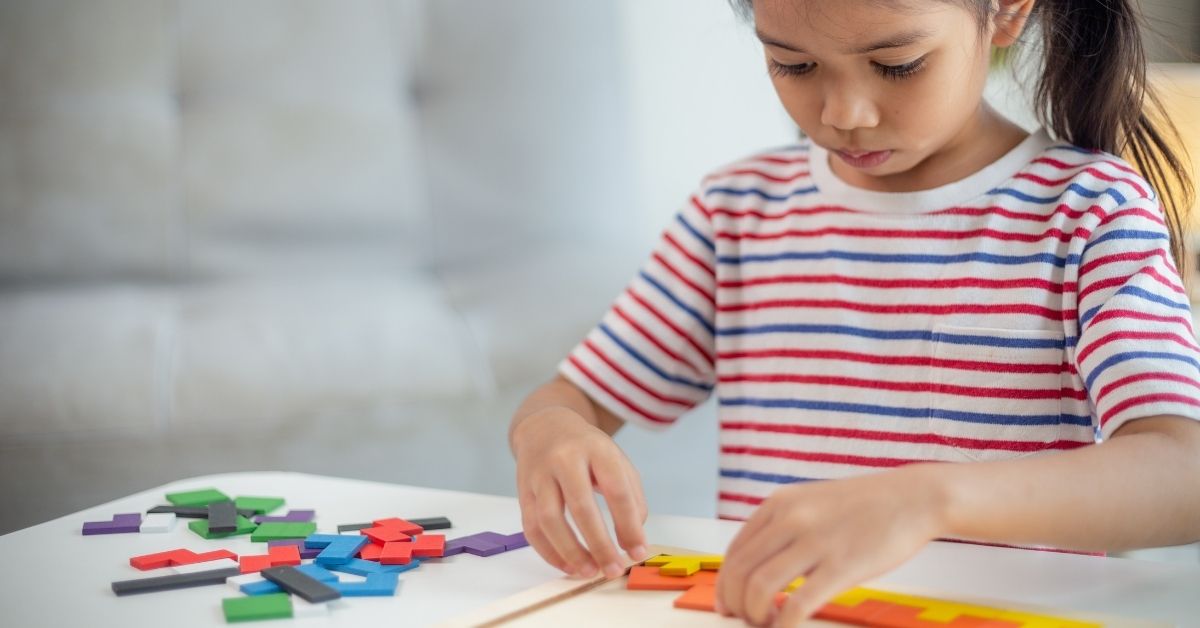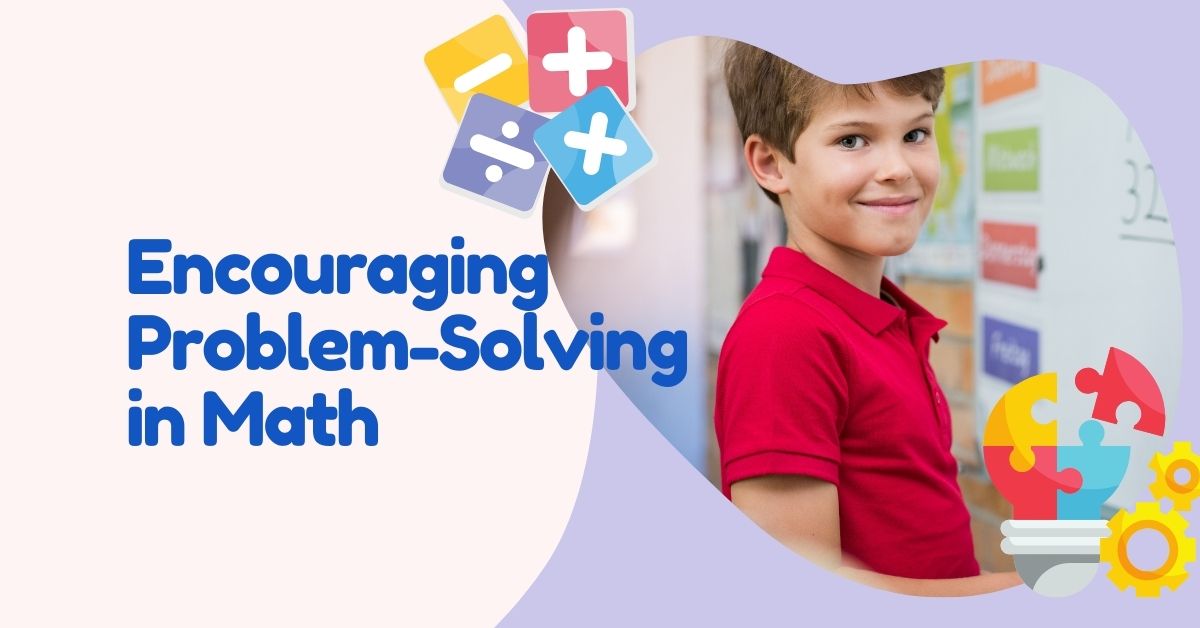Math doesn’t have to be a boring list of equations and drills. For homeschool families, math can be a creative, engaging, and even exciting part of the day! By encouraging problem-solving, you help your child develop critical thinking skills that extend far beyond the numbers on a worksheet. Teaching kids to approach math as a series of fun challenges not only deepens their understanding but also builds confidence and perseverance.
But where do you start? That’s where we come in! Today, we’re sharing math puzzles, strategies, and games you can try at home to make math problem-solving a hands-on, brain-boosting adventure.
Why Focus on Problem Solving?
Before we dive into activities, it’s important to understand why problem-solving is such a key component of math education. The beauty of math isn’t just in finding the right answer—it’s in discovering how to get there. Problem-solving encourages kids to think critically, experiment, and collaborate with you as the teacher.
By weaving these skills into your homeschooling routine, you’re not only strengthening their math foundation but also fostering their creativity, logical thinking, and adaptability. These are skills they’ll use for a lifetime, whether they’re calculating grocery budgets or designing the next Mars rover!
Now, let’s get into the fun stuff—here are some ways to encourage problem-solving in your homeschool environment.
Start with Open-Ended Math Questions
One of the best ways to jumpstart problem-solving is to present open-ended math questions without a single correct answer. These questions give your child room to explore creative solutions and explain their thought processes.
For example:
- “How many ways can you make 10 using addition or subtraction?”
- “What shapes can you create if you combine 3 triangles and 2 rectangles?”
- “If you had $5 to spend at a candy shop, what would you buy?”
This kind of math prompts open up opportunities for discussion, trials, and new strategies. Encourage your child to talk through their thinking as they solve each question.
Pro tip: Keep a notebook or whiteboard handy so your kids can jot down their work, circle back to ideas, and tweak their approaches.
Use Hands-On Math Puzzles
Children often learn best when they can touch and manipulate objects. Math puzzles and brainteasers are perfect for inspiring hands-on learning—and the options are endless!
Jigsaw Math Problems
Create or buy puzzles that include missing numbers, patterns, or equations as part of the solution. For younger kids, try puzzles that encourage number recognition or counting. Older kids can tackle algebra-inspired puzzles or Sudoku.
Tangrams
Tangrams are an excellent way to teach geometry and spatial awareness. Give your child a set of seven tangram pieces and challenge them to recreate specific shapes or animals. This promotes problem-solving as they figure out how the pieces fit together.
Pattern Blocks
With a set of pattern blocks, you can explore symmetry, fractions, and more. Challenge your child to create specific designs with limitations (e.g., “Use only triangles to make a hexagon”). The problem-solving required to meet these “rules” can really push their creativity.

Build Your Own Math Games
Games are a fantastic way to marry fun and learning. Plus, they keep those math muscles working without the pressure of a traditional worksheet.
Number Scavenger Hunt
Hide numbers (or cards with equations) around the house, then give your child clues to find each one. Once they’ve collected them all, challenge them to arrange the numbers to reach a target sum or solve a larger equation.
Math Card Games
You don’t need fancy materials—your standard deck of cards works wonders. Play “Addition War” by flipping two cards each, and whoever has the higher sum wins the round. For older kids, switch to “Multiplication War” or play “Math Rummy,” where players work to create equations with their cards.
DIY Board Game
Turn math into a family event by making your own board game. Use a large sheet of paper to draw out a path, then write math challenges on some spaces. For example, landing on “Solve 8 x 7” allows a player to roll again. You could even include silly spaces like “Hop like a frog for the next 3 turns.” This is where math meets creativity!
Integrate Real-Life Problem Solving
Math holds so much more meaning when kids can connect it to real-world puzzles. The great news is you don’t need to leave the house to find everyday opportunities for math exploration.
Cooking and Baking
Cooking offers lessons in fractions, measuring, and conversions. Have your child double a recipe or measure out ingredients to see fractions come to life. Making pizza? Challenge them to divide it into equal parts or calculate what’s left after everyone grabs a slice.
Budgeting and Shopping
Turn a grocery store trip into a math adventure! Give your child a budget—say $10—and ask them to keep track of prices while shopping. Older kids can calculate sales tax or compare price-per-ounce values to find the best deal.
Building and Design Challenges
Ask your child to build something using blocks, LEGOs, or recyclables. Projects like designing a bridge that can hold weight or constructing a house with exact dimensions involve measurement, angles, and critical thinking.
Try Online Math Puzzles and Resources
If you’re looking for something quick to set up, there’s a wealth of online tools that make math interactive and fun. Websites like Math Playground or apps like Prodigy Math Game present math in puzzle or adventure formats, allowing kids to practice problem-solving digitally. Interactive games often include rewards and challenges to keep kids motivated, too.
Foster a Growth Mindset
While puzzles and games go a long way in keeping math exciting, your child’s mindset is really the key to lasting success. Problem-solving can sometimes result in frustration, so it’s important to encourage resilience and a positive attitude.
Here are a few ways to nurture a growth mindset during math activities:
- Celebrate effort over accuracy. Praise your child when they try multiple methods, even if they don’t solve the problem right away.
- Teach your child to say, “I haven’t figured it out yet,” instead of “I’m not good at this.”
- Share mistakes you’ve made while solving math problems and explain how you learned from them.
When kids feel supported, they’re more likely to approach math with curiosity instead of fear.
7. Adapt to Your Child’s Skill Level
Not every math challenge will fit every child, so it’s essential to meet them where they are. Here are a few examples of age-specific activities:
- Preschool (Ages 3-5)
Use counting games, basic puzzles, and pattern blocks. Try asking questions like, “How many apples do we have if we take away 2?” - Elementary (Ages 6-10)
Bring in harder puzzles like Sudoku or tangrams, card games, and multiplication scavenger hunts. Explore word problems tied to everyday life. - Middle School (Ages 11-13)
Incorporate algebra puzzles, coordinate plane challenges, or strategy-based games like chess. Encourage logical reasoning and discussions about the “why” behind solutions.
Becoming a Curious, Confident Problem-Solver
Encouraging problem-solving in math doesn’t only teach your child to be good with numbers—it teaches them to approach the world as a curious, confident problem-solver. By incorporating puzzles, strategies, and games into your homeschool lessons, math becomes less of a chore and more of an adventure.
The best part about homeschooling is how easily you can tailor these activities to suit your child’s strengths and challenges. The next time math rolls around on the schedule, grab some dice, cook up a recipe, or break out a favorite board game. Together, you’re not just solving problems—you’re building skills, memories, and confidence that will last a lifetime.





